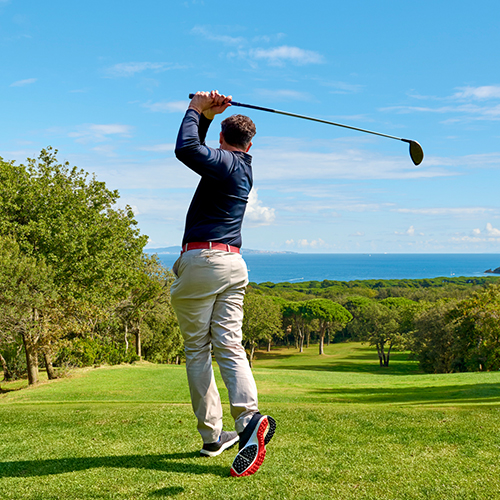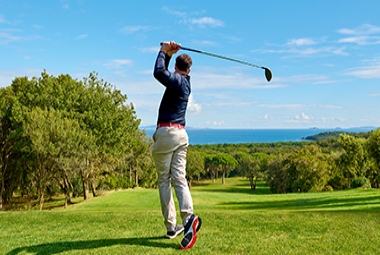
For passionate golfers, getting back on the course after shoulder surgery - whether it’s a rotator cuff repair or shoulder replacement - is both exciting and a bit daunting. The good news? With the right recovery plan and expert guidance, many golfers can safely return to the fairway while keeping their swing strong and avoiding re-injury. Here’s how to tee up a successful comeback!
Recovery After Rotator Cuff Surgery: Patience Is Key
The rotator cuff plays a vital role in the overhead motion required for golf swings, making rotator cuff repair surgery a frequent necessity for golfers. Research indicates that 76% of golfers successfully return to the sport after undergoing rotator cuff repair, with most resuming their previous level of performance and experiencing minimal lingering symptoms.1 After the surgery, it's important to allow the shoulder time to heal. Recovery typically involves several phases:
- Initial Healing Phase: For the first few weeks, you will be instructed to rest the shoulder and wear a sling to limit movement. This allows the repaired tissue to heal properly.
- Physical Therapy: Once the healing phase is over, physical therapy will be essential to restore range of motion and strengthen the shoulder. It's important to follow the prescribed exercises and avoid activities that could strain the shoulder.
- Gradual Return to Activity: Dr. Hill will guide you through a gradual return to physical activities, including golf. You should not expect to return to a full swing immediately, as your shoulder needs time to adapt to the repetitive motions involved in golf.
Patience is essential, as pushing too hard too soon can lead to setbacks.
Shoulder Replacement: A New Beginning for Golfers
For golfers suffering from severe shoulder arthritis or extensive damage, a shoulder replacement may be recommended. Shoulder replacement surgery involves replacing the damaged joint with an artificial implant. Recovery from shoulder replacement surgery may take longer than rotator cuff repair, but with proper rehabilitation, golfers can return to their sport.
Post-Surgery Recovery for Shoulder Replacement includes:
- Post-Operative Care: Similar to rotator cuff surgery, the initial phase involves rest and gradual rehabilitation to strengthen the shoulder.
- Activity Progression: Golfers can usually return to the course after 4 to 6 months, but the intensity and type of shots will depend on Dr. Hill's assessment and physical therapy progress.
The Role of Physical Therapy in Your Return to Golf
Whether you’ve had rotator cuff surgery or shoulder replacement, physical therapy is key to regaining strength and flexibility. Dr. Hill’s rehabilitation programs will help restore motion and functionality to your shoulder while preparing you for the motions required for golf.
The rehabilitation will focus on:
- Restoring shoulder range of motion
- Strengthening key muscle groups involved in the golf swing
- Improving stability and coordination
Gradual Return to Golf: Playing Smart
Getting back to golf after shoulder surgery takes patience, commitment to physical therapy, and a step-by-step approach. Instead of jumping straight into full rounds, start with short practice sessions to rebuild your strength, mobility, and confidence. Dr. Hill provides expert guidance on modifying your swing and game to protect your shoulder, so you can safely return to enjoying the sport you love.
AUTHOR: Brian W. Hill, M.D. is a board-certified shoulder surgeon at Palm Beach Orthopedic Institute. He is an expert in advanced reconstructive and arthroscopic techniques, and serves as an assistant team physician for the Washington Nationals and their affiliates. Dr. Hill treats shoulder injuries and arthritis with a focus on patient-centered care and clear communication.
Reference :






